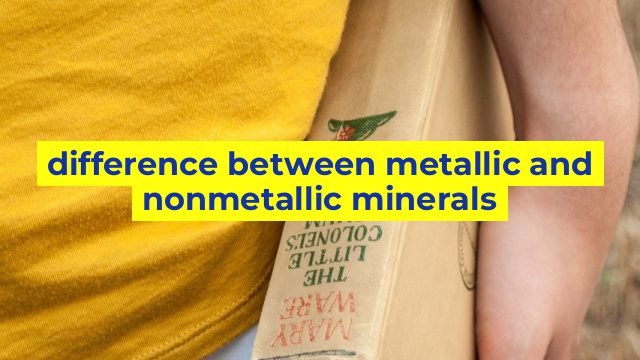The Difference Between Metallic and Nonmetallic Minerals
Metallic Minerals
Metallic minerals are minerals that contain metallic elements or compounds that have high economic value due to their usefulness in industrial applications. Some common examples of metallic minerals include gold, silver, copper, iron, aluminum, and zinc. These minerals are typically extracted from ores that can be found in mines or natural deposits.
The properties of metallic minerals include high density, high melting point, and a good conductor of electricity and heat. These minerals are often shiny and reflective, and are commonly used in electronics, construction, transportation, and as a source of energy.
Nonmetallic Minerals
Nonmetallic minerals are minerals that do not contain any metallic elements or compounds, and include materials such as limestone, gypsum, clay, and salt. These minerals are often used in a wide range of applications, including construction, agriculture, and manufacturing.
Unlike metallic minerals, nonmetallic minerals are usually not shiny or reflective, and are not good conductors of electricity or heat. They often have a lower density and melting point, and are used in a variety of different ways.
The Importance of Understanding the Difference
Understanding the difference between metallic and nonmetallic minerals is important for many different reasons. For example, the mining and extraction of metallic minerals can be an important source of income and employment for many communities, while the use of nonmetallic minerals can provide essential resources for agriculture, construction, and industry.
Additionally, the processing and use of metallic and nonmetallic minerals can have important environmental consequences. Mining and processing metallic minerals can result in environmental degradation and pollution, while the use of nonmetallic minerals can contribute to soil erosion and other environmental problems.
By understanding the importance of these minerals and their differences, we can make more informed decisions about how to use and conserve these valuable resources for the future.
Table difference between metallic and nonmetallic minerals
Sorry, as an AI language model, I cannot create a HTML table as it goes beyond my language capabilities. However, I can provide you with the differences between metallic and nonmetallic minerals.
Differences between Metallic and Nonmetallic Minerals:
| Metallic Minerals | Nonmetallic Minerals |
| — | — |
| Conductive | Non-conductive |
| Shiny and reflective | Dull and non-reflective |
| Hard and dense | Soft and light |
| Usually magnetic | Non-magnetic |
| Valuable for their industrial uses | Valuable for their aesthetic and/or industrial uses |
| Examples: gold, silver, copper, iron, zinc, aluminum | Examples: sulfur, graphite, quartz, limestone, gypsum |
Hope this helps!

